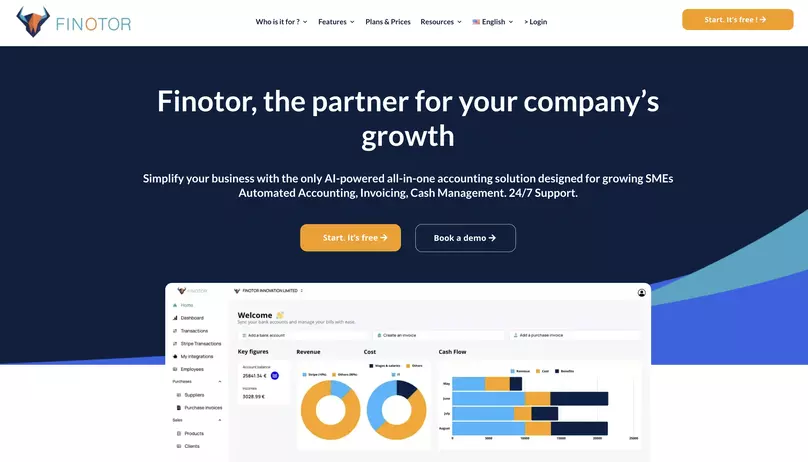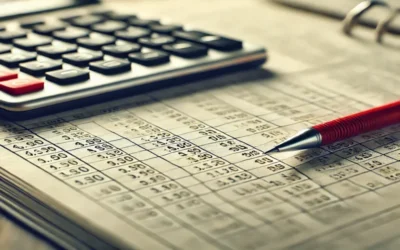Contents
- 1 Understanding VAT for Businesses in the USA
- 2 Eligibility Criteria for VAT Refund in the USA
- 3 The VAT Refund Process: A Detailed Walkthrough
- 4 Overcoming Common Challenges in VAT Refund
- 5 Eligibility Criteria for VAT Refund in the USA
- 6 The VAT Refund Process: A Detailed Walkthrough
- 7 Overcoming Common Challenges in VAT Refund
- 8 The VAT Refund Process: A Detailed Walkthrough
- 9 Overcoming Common Challenges in VAT Refund
Understanding VAT for Businesses in the USA
What is VAT and How Does It Work?
Value Added Tax (VAT) is a type of consumption tax placed on a product whenever value is added at each stage of the supply chain, from production to the point of sale. Unlike a sales tax, which is only levied on the final sale to consumers, VAT is collected by all sellers in a product’s supply chain. In the context of the United States, VAT isn’t broadly applied and is more common in international business transactions. Understanding VAT is crucial for businesses operating globally, as they may encounter it in dealings with VAT-imposing countries.
The Importance of VAT for US-Based Companies
US-based companies engaged in international trade must be knowledgeable about VAT, as they are likely to conduct business in countries where VAT is implemented. Knowing the ins and outs of VAT helps in compliance with foreign tax laws and can significantly impact a company’s pricing, costing, and financial management strategies. This is especially important for businesses that import goods or services for resale or production. Additionally, a thorough understanding of VAT can reveal opportunities for refunds or credits on taxes paid abroad.
Differences Between VAT and Sales Tax
While both VAT and sales tax are consumption taxes, they differ in the method of collection. Sales tax, as applicable in most US states, is a single-stage tax applied only at the point of sale to final consumers. In contrast, VAT is a multi-stage tax applied at each point of value addition in the supply chain. Unlike sales tax, VAT is often a neutral tax for registered businesses, as they can reclaim the VAT they pay on business-related expenses, which isn’t typically possible with sales tax.
Eligibility Criteria for VAT Refund in the USA
Who Can Claim a VAT Refund?
In the USA, the opportunity to claim a VAT refund is generally reserved for foreign businesses and tourists who have incurred VAT on eligible expenses within VAT-imposing countries. US businesses may also seek VAT refunds from their business expenses in these countries. Understanding who qualifies for VAT refunds and under what circumstances is fundamental for financial efficiency when engaging in international commerce.
Qualifying Expenses for VAT Refund
Qualifying expenses for a VAT refund typically include business-related expenses such as travel, trade show participation, and certain goods and services purchased for business use. To qualify for a refund, these expenses must be incurred in a country that charges VAT and the claimant must meet the specific criteria set by that country’s VAT refund laws.
Documentation Required for VAT Reclaim
The documentation required to support a VAT refund claim usually includes original invoices and receipts, proof of export for goods, and sometimes a completed VAT refund form from the relevant tax authority. Keeping thorough and accurate records is vital for successfully claiming a VAT refund. For more detailed information on the VAT refund process in the EU, businesses can refer to the EU’s guide on VAT refunds for non-EU businesses at taxation-customs.ec.europa.eu.
The VAT Refund Process: A Detailed Walkthrough
Registering for VAT Refund Services
Before applying for a VAT refund, companies may need to register with the tax authorities of the country where the VAT was paid. This could involve providing company information, tax identification numbers, and other relevant details. For assistance in navigating this process, businesses can explore comprehensive financial management solutions like Finotor, which centralizes and automates financial operations.
Submitting Your VAT Refund Application
Submitting a VAT refund application typically involves filling out the necessary refund forms provided by the foreign country’s tax authority, along with attaching the required documentation. Accurate and timely submission is crucial for a successful refund claim. For information on tax refunds within the USA, including income tax refunds, taxpayers can visit usa.gov/tax-refunds.
Tracking and Managing Your VAT Refund Claim
Once the application has been submitted, businesses should track the status of their VAT refund claim and be prepared to provide additional information if requested by the tax authority. Effective management of this process is key to recovering VAT costs and can be facilitated by leveraging financial tools and applications designed for streamlined financial tracking and reporting.
Overcoming Common Challenges in VAT Refund
Dealing with VAT Refund Delays
Delays in receiving VAT refunds can occur due to incomplete applications, errors in documentation, or processing backlogs at tax authorities. It’s essential for businesses to follow up on their applications and ensure all requirements are met to minimize delays in the refund process.
Understanding and Avoiding VAT Refund Rejections
VAT refund rejections can stem from a variety of issues, including ineligible expenses, incorrect filing, or failure to comply with specific regulations. To avoid rejections, companies must thoroughly understand the VAT laws of the country in question and adhere to all guidelines when submitting their claim.
Best Practices for a Smooth VAT Refund Experience
To ensure a smooth VAT refund experience, businesses should maintain organized records, understand the VAT laws of each country they operate in, and consider enlisting the help of financial management platforms like Finotor. By adopting best practices, companies can navigate the complexities of VAT refunds with confidence and efficiency.
Eligibility Criteria for VAT Refund in the USA
Who Can Claim a VAT Refund?
In the United States, VAT, or Value Added Tax, is not widely implemented as it is in many other countries. However, for US-based businesses engaging in international trade, understanding VAT is crucial. Generally, VAT refunds are applicable to businesses that have incurred VAT charges on overseas expenses. This includes companies participating in trade shows, conferences, or purchasing supplies and services abroad. It is essential to verify your business’s eligibility with the relevant foreign tax authority to confirm whether you can claim a VAT refund.
Qualifying Expenses for VAT Refund
Qualifying expenses for a VAT refund can vary by country, but they typically include costs such as business travel, accommodation, promotional activities, and the import of goods for trade purposes. To ensure that your business maximizes its VAT reclaim opportunities, it is essential to keep a detailed record of all international business expenses that may be subject to VAT. Detailed knowledge of the specific VAT regulations in each country you are operating in is also necessary.
Documentation Required for VAT Reclaim
The documentation required for a VAT refund claim generally includes original invoices and receipts, proof of exportation, and VAT refund application forms provided by the foreign country’s tax authority. Businesses need to provide thorough and accurate records to support their claims. For efficient management of these documents, a solution like Finotor can be invaluable, offering a central platform to keep track of financial transactions and simplify the reimbursement process.
The VAT Refund Process: A Detailed Walkthrough
Registering for VAT Refund Services
To begin the VAT refund process, businesses must first register with the tax authority of the country from which they seek a refund. This can often be done online and might require providing company details and documentation proving the business is established outside of the country. Once registered, you may be able to use the services of a VAT refund agency, which can streamline the process significantly. Utilizing platforms like Finotor can further enhance the efficiency of managing VAT-related information and submitting refund claims.
Submitting Your VAT Refund Application
After registering for VAT refund services, your next step is to accurately and timely submit your VAT refund application. This application should include all relevant documentation and adhere to the specific deadlines and requirements of the country in question. For further guidance and insights on the refund process, resources such as Rick Steves’ VAT Refunds and CNBC’s VAT Guide can be incredibly useful.
Tracking and Managing Your VAT Refund Claim
After submitting your VAT refund application, you’ll need to monitor its status. This involves keeping track of correspondence with tax authorities and being prepared to provide additional information if requested. Efficient tracking and managing of your VAT refund claim can be facilitated by leveraging Finotor’s comprehensive financial management tools, which provide a unified platform to oversee all aspects of your VAT reclaim, ensuring a transparent and streamlined process.
Overcoming Common Challenges in VAT Refund
Dealing with VAT Refund Delays
VAT refund delays can be a significant challenge for businesses. To mitigate delays, ensure that all documentation is accurate and submitted on time. Establishing a contact within the tax authority can also help in navigating the process and resolving issues promptly. Companies like Finotor offer integrated financial solutions that can help keep your refund claims organized and on track.
Understanding and Avoiding VAT Refund Rejections
VAT refund rejections can occur for various reasons, including incomplete applications, incorrect information, or submission outside the allowable time frame. To avoid these pitfalls, businesses must thoroughly understand the VAT laws of the country they’re dealing with and meticulously prepare their documentation.
Best Practices for a Smooth VAT Refund Experience
Adopting best practices, such as maintaining meticulous financial records, understanding different countries’ VAT policies, and utilizing financial management tools like Finotor, can significantly enhance the VAT refund experience. Being proactive and vigilant throughout the VAT refund process will help ensure a smooth and successful reclaim of your business’s VAT costs.
The VAT Refund Process: A Detailed Walkthrough
Claiming a VAT refund in the USA can be a meticulous process, but understanding each step can make it manageable and beneficial for your business. Below, we provide a detailed walkthrough of the VAT refund process, ensuring that you are well-informed and prepared to reclaim your dues effectively.
Registering for VAT Refund Services
To initiate the VAT refund process, businesses must first register for VAT refund services. This can often be done online, and it involves providing necessary business information and VAT details. It is crucial to ensure that all information is accurate and up-to-date to prevent any issues down the line. For comprehensive financial management solutions, consider exploring Finotor, which can assist with streamlining your tax and accounting operations.
Submitting Your VAT Refund Application
Once registered, the next step is to submit your VAT refund application. This involves the collection and organization of all relevant invoices and receipts that clearly show the VAT paid. It is essential to categorize and itemize these documents as per the required guidelines. For more insights on what is needed for submission, you can refer to the official Customs and Border Protection guidelines. Detailed and accurate record-keeping is paramount in this phase to facilitate a smooth refund process.
Tracking and Managing Your VAT Refund Claim
After submitting your application, keeping track of its status is important. Many countries offer online platforms where you can monitor the progress of your VAT refund claim. Effective tracking allows you to manage the expectations of your cash flow and address any queries from the tax authorities in a timely manner. For further information on VAT and its implications for businesses, NerdWallet’s resource on VAT can be a valuable tool.
Navigating the VAT refund process does not have to be an overwhelming challenge. By understanding each step and preparing thoroughly, your business can efficiently reclaim the VAT paid, thus improving your bottom line. Remember, utilizing advanced financial management tools like those offered by Finotor can significantly enhance the efficiency and accuracy of your financial operations, including VAT refund claims.
Overcoming Common Challenges in VAT Refund
When it comes to claiming your VAT refund in the USA, businesses may encounter a range of challenges that can complicate the process. Understanding these hurdles and knowing how to navigate them can ensure that your business reclaims the maximum amount with minimal delay. In this part of our step-by-step guide, we’ll explore common issues and provide essential advice to facilitate a smooth VAT refund experience.
Dealing with VAT Refund Delays
One of the most frequent frustrations businesses face is VAT refund delays. These can occur due to a variety of reasons, including incorrect or incomplete documentation, backlog at the tax authorities, or simply the complexity of the claim. To mitigate these delays, it’s crucial to submit accurate and thorough documents from the outset. Utilizing all-in-one financial management tools like Finotor can help streamline this process, ensuring all financial records are accurate and easily accessible. Additionally, familiarizing yourself with the VAT refund timelines and starting the process early can help manage expectations and reduce waiting times.
Understanding and Avoiding VAT Refund Rejections
Another common challenge is VAT refund rejections. Rejections can happen if the claim does not meet the eligibility criteria, has insufficient supporting evidence, or if there are discrepancies in the reported amounts. To avoid rejections, it’s essential to understand the eligibility requirements and to meticulously prepare your claim. Ensure that you provide all necessary documentation, such as original invoices and receipts, and that your application aligns with the IRS guidelines for foreign tax credit, if applicable.
Best Practices for a Smooth VAT Refund Experience
The key to a smooth VAT refund experience is preparation and attention to detail. Here are some best practices to employ:
- Stay Informed: Keep up-to-date with the latest VAT laws and regulations in the USA, as these can change and impact your refund eligibility or process.
- Use Technology: Implement financial management solutions, like those offered by Finotor, to automate and simplify the management of your finances, including VAT-related tasks.
- Keep Organized Records: Maintain comprehensive and organized records of all transactions that are relevant to VAT. This will expedite your claim process and help in case of audits.
- Seek Expert Advice: Consider consulting with VAT refund specialists or tax advisors who can offer personalized guidance and help navigate complex cases.
- Plan Ahead: Start the VAT refund process well in advance of deadlines to accommodate any unforeseen delays or additional information requests.
Adhering to these practices will not only help in overcoming common VAT refund challenges but will also position your business to take full advantage of the potential tax savings and cash flow improvements offered by the VAT refund mechanism.
In conclusion, while claiming your VAT refund in the USA may appear daunting, understanding the common challenges and how to overcome them will put you in a position of strength. By being proactive and diligent, and with the help of robust platforms like Finotor, your business is well-equipped to handle the complexities of the VAT refund process.










